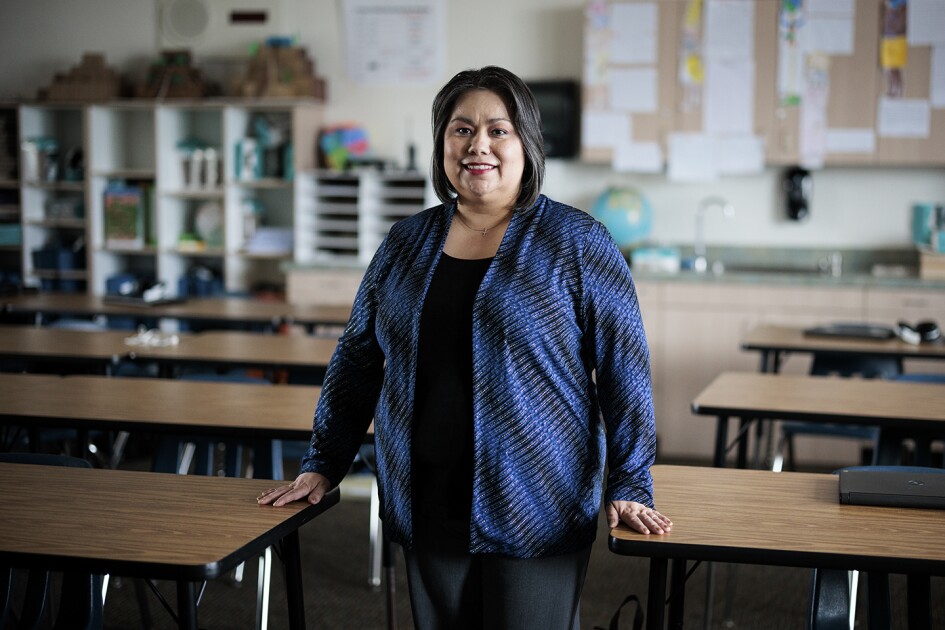A vast majority of school nutrition directors say their programs are challenged by food, labor, and equipment costs; staffing shortages; and procurement issues.
Those are the core findings of an annual poll of about 1,400 school cafeteria leaders released by the School Nutrition Association Jan. 14. The survey, conducted in October, also found increases in the median school breakfast and lunch costs that districts charge students who do not receive free and reduced-price meals.
The findings come after years of challenges for school meal directors, who adapted quickly to serve students grab-and-go meals during pandemic-related school closures, and now face competition in hiring and challenges in sourcing foodstuffs and ingredients for meals.
They also come as child-nutrition advocates brace for possible changes in federal food policy. President-elect Donald Trump has promised to slash spending across agencies. School meal directors, who’ve pushed for higher federal reimbursements for school breakfasts and lunches, are unsure if such cuts could include their programs.
Healthy school meals help offset food costs for families and contribute to academic achievement, SNA President Shannon Gleave said in a statement.
“But for less than the average price of a latte, school nutrition professionals are expected to prepare and serve a nutritionally balanced lunch, complete with fruits, vegetables, lean protein and milk,” she said, referring to the $4.30 federal reimbursement schools receive for subsidized free lunches. Schools receive $2.37 for each free breakfast.
Here are three key findings from the survey.
1. School food directors say federal reimbursements don’t cover costs
About 21 percent of respondents said federal reimbursements alone are enough to cover the labor, equipment, and supplies involved in preparing and serving a school lunch. Twenty-five percent said federal reimbursements cover the costs of breakfasts.
Cost factors were the top three issues respondents identified as “significant” or “moderate” concerns: 98 percent had concerns about food costs, 95 percent about labor costs, and 91 percent about equipment costs.
Perhaps it’s no surprise that school meal prices also increased last year. Among elementary schools without universal free school meals, the median price students paid for lunches increased from $2.75 in 2022-23 to $2.95 in 2023-24, with similar price increases at all grade levels, respondents reported.
2. Unpaid school meal debt remains a concern
School meal programs often operate apart from general district budgets, covering their own costs on tight margins. That’s why shifts in supply chains and labor markets can be particularly disruptive.
Ninety-five percent of school food programs that don’t offer universal free meals reported carrying unpaid student meal debt. The issue is a perennial—and politically tricky—concern for cafeteria directors who are often reluctant or prohibited from withholding meals from students with large outstanding balances.
A growing number of schools serve universal free school meals under a state policy or a federal options known as “community eligibility.” Under that rule, qualifying schools provide federally subsidized free lunches and breakfasts to all students without requiring income verification from their families. Schools or clusters of schools are eligible if at least 25 percent of their student population automatically qualifies for free lunches through participation in social safety net programs like Medicaid or federal food assistance.
About 20 million children—around 40 percent of the nation’s public school students—attend schools that have adopted the community eligibility provision. Some conservative lawmakers and Trump administration appointees have advocated for eliminating the program or raising the threshold for a school to qualify.
Among school programs that offer universal free school meals, 26 percent reported outstanding meal debt. Those are likely costs that carried over in schools that recently started offering free meals universally, said Diane Pratt-Heavner, a spokesperson for SNA.
3. School meal programs compete for employees
Seventy-two percent of respondents reported at least one employee vacancy in their program. And a reported staff vacancy rate of 8.7 percent is higher than the 6.2 vacancy rate for hospitality and foodservice employees in general the month the survey was conducted, according to federal data.
District leaders have said rising housing costs and competition from gig-economy jobs, like driving for rideshare programs, has made it more difficult to recruit and retain employees like bus drivers and school food workers.
Among respondents, 92 percent said they had “significant” or “moderate” concerns about the sustainability of their meal programs three years from now.









